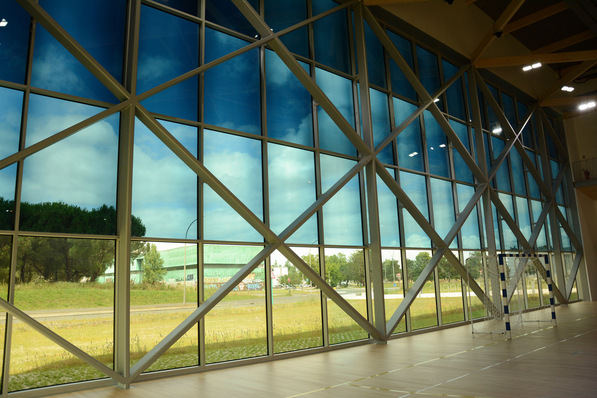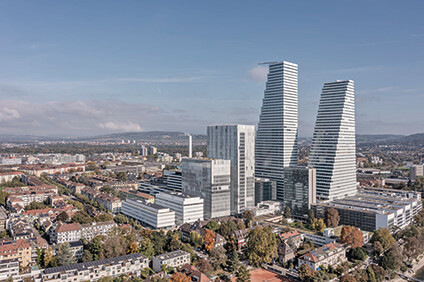The spectacular building project was initiated by Professor Werner Sobek. The 36.5-metre test building, which is currently under construction, is located on the Vaihingen campus of the University of Stuttgart and is the first structure in the world that can react actively to external influences such as wind or earthquakes in a targeted manner and in real time.
An artificial musculature (the so-called actuator system) counteracts short-term loads, for example from gusts of wind, thus preventing the building from vibrating. By means of targeted temporary deformation of the supporting structure at some few points, these actuators also prevent critical components from being overly strained by loads that are acting on them for longer periods of time (e.g. snow or similar).
50 per cent less mass
The goal of this research is achieving a radical reduction in weight and thus in the amount of resources used - one of the great social and scientific challenges of our time. With their adaptive high-rise building, the researchers at the University of Stuttgart are saving almost 50 per cent of the mass that a comparable building of conventional construction would have. At the same time, it also incurs 46 per cent fewer greenhouse gas emissions.
Did you miss our articles on the TU Delft's Bucky Lab?
Click here for the complete series.
The Collaborative Research Centre SFB 1244, funded by the German Research Foundation (DFG), is concerned with the question of how, in view of a growing world population and shrinking resources, more living space can be created in the future with less material in a climate-neutral way.
Against the background of achieving maximum reduction in material and energy consumption, while at the same time increasing user comfort, 14 university institutes from a wide range of disciplines are researching the potential and applicability of adaptive building shells and structures in the construction industry.
Funded by the state and the university
The total construction costs of the project, which is partly funded by the state of Baden-Wuerttemberg, amount to 2 million euros. The University of Stuttgart is contributing approximately 1.3 million euros. From spring 2021, there will be regular public tours of the demonstrator building.
See also this article:
PV Power roof for historical building in Switzerland
Professor Werner Sobek of the Institute of Lightweight Structures and Conceptual Design (ILEK) at the University of Stuttgart is the spokesperson of the Collaborative Research Centre. He and the deputy speaker of the SFB, Professor Oliver Sawodny from the Institute for System Dynamics (ISYS), are very happy with what has been achieved so far: “The research of SFB 1244 impressively shows how we can build with a radically reduced use of resources. Ultra-lightweight construction is a key technology for the construction industry in the 21st century.”













